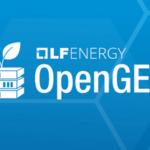As previously reported, the Community Health Team has started to have regular, bi-weekly meetings in an effort to develop and update the Code of Conduct (CoC) for the Drupal community.
Community Health Team members present at this week’s meeting were
During the meeting, we created milestones leading up to our December 14 goal of having a revised Code of Conduct ready for adoption. This time frame allows us ten 2-week sprints. We settled on a timeline based on one, 2-week public review period and two, 2-week community stakeholder review periods. We created a Trello board with initial tasks for each sprint.
George DeMet will be responsible for managing and prioritizing our backlog of tasks. Donna Bungard will facilitate our meetings and hold us accountable and ensure all team members have tasks for each sprint.
Our main task for the current sprint is to populate a new Miro board with elements of our current Code of Conduct and other Codes of Conduct that we’d like to include in our community’s next Code of Conduct. Jordana Fung will schedule daily Slack reminders to the team to add things to the board.
At our next meeting on August 10, we will discuss and decide which elements will be part of an initial outline to be shared with community stakeholders for feedback. This outline will include what, if anything, we are proposing to keep or discard from our current Code of Conduct as well as any elements that we are considering adopting from other Codes of Conduct.
In previous outreaches to the community related to our current Code of Conduct, the most common request has been that our Code of Conduct be more specific and actionable; this will be an important guiding principle for the team.
If you know of any Code of Conducts from other communities that you feel have elements we should emulate, please let us know at drupal-cwg at drupal dot org or via Twitter @drupalcommunity
A number of Drupal-related groups and individuals have confirmed their willingness to provide feedback to this effort as the process proceeds. If you, or a Drupal-related group, is interested in being part of this process as a community stakeholder, please let us know at drupal-cwg at drupal dot org.
 Neville Spiteri is the co-founder/CEO of Wevr and a member of the Academy Software Foundation. Learn more about Neville here.
Neville Spiteri is the co-founder/CEO of Wevr and a member of the Academy Software Foundation. Learn more about Neville here.

